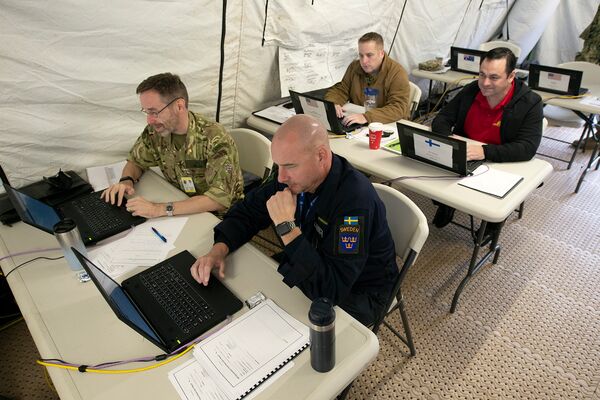
US and partner country military personnel participate in an MPE computer network demonstration in Suffolk, Virginia, on 4 November 2021. (US Department of Defense)
From the ‘coalition of the willing‘ that underpinned the 2003 US invasion of Iraq, the evolution of coalition warfare has been accelerated by the maturation of information, networking, and communication technologies that have enabled disparate armed forces to wage war under one banner.
The technological advances made by the US Department of Defense (DoD) to support coalition operations, and the department's self-imposed transition from network-centric to data-centric operations, has triggered a demand inside the Pentagon for new ways to share critical data with coalition forces.
The DoD‘s most advanced effort for getting the US and its allies on the same data footing, from the strategic to the tactical level, is the Mission Partner Engagement (MPE) programme.
Since being named the Joint Staff's chief information officer (J6) in May 2021, US Marine Corps Lieutenant General Dennis Crall has made development of the MPE and modernisation of Identity, Credential, and Access Management (ICAM) processes, a key enabler for any MPE programme, a top priority.
As conceptualised, the MPE is to provide seamless information-sharing capabilities such as real-time online chat, email, and file sharing, along with collaborative intelligence sharing and analysis technologies between US commanders and their counterparts in NATO and other partner countries, at the secret and below releasable environment (SABRE) classification level.
Looking to read the full article?
Gain unlimited access to Janes news and more...







